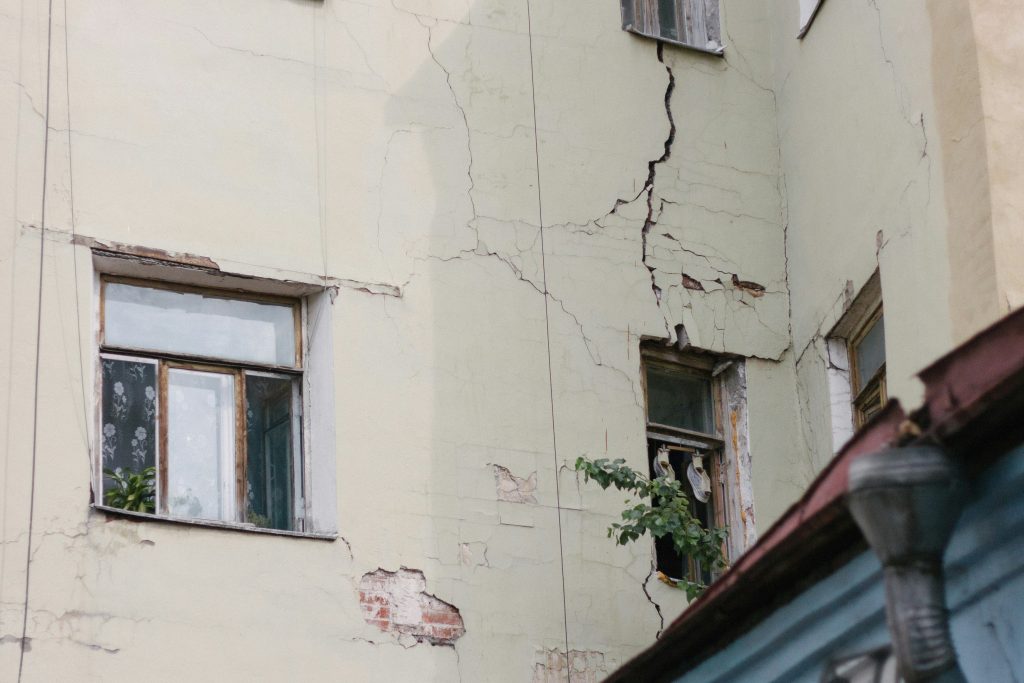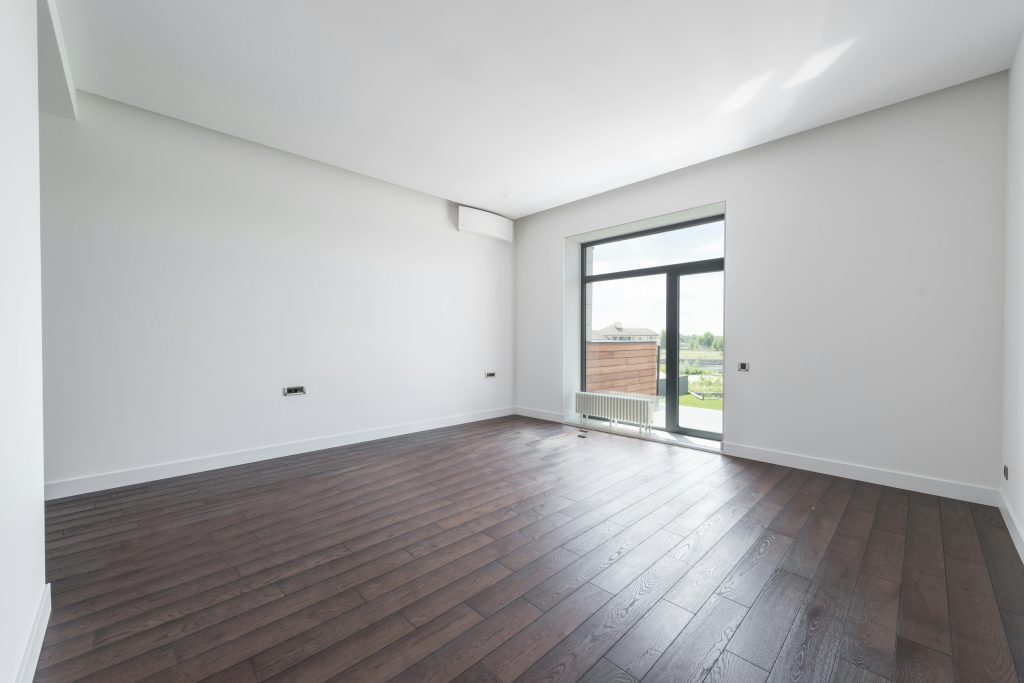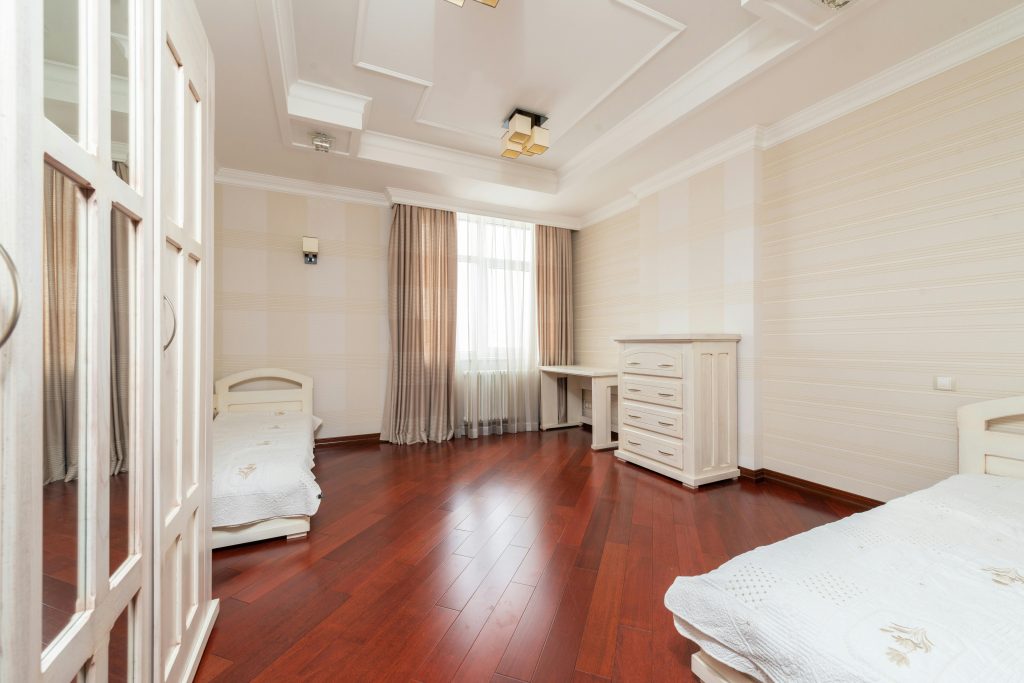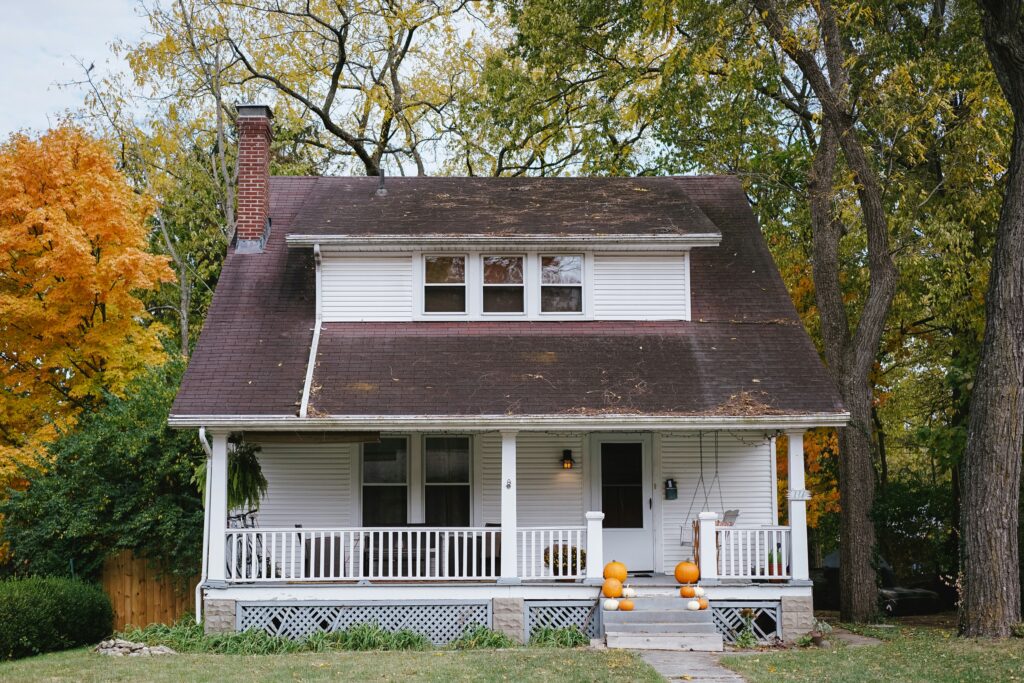Once upon a time, flats were the obvious first rung on the property ladder. Cheaper than houses. Easier to manage. Prime locations.
But here in 2025? That once-hot market has cooled dramatically.
If you’re a flat owner watching your Rightmove listing gather dust, you’re not alone. Thousands are in the same boat — and it’s not because your kitchen’s the wrong shade of grey.
This guide breaks down exactly why flats are struggling to sell in today’s market — and what you can do to shift yours faster.
Market & Economic Headwinds: Why Flats Are Feeling the Pressure
Interest Rates Are Smashing Buyer Budgets
Let’s not sugar-coat it: the economy’s doing your flat no favours.
The Bank of England’s base rate has shot up from a rock-bottom 0.1% (in 2021) to over 5% in 2024. That’s made mortgages brutally expensive, and first-time buyers are feeling the squeeze.
Yes, 2025 has seen some improvement, but it’s not enough to generate excitement in the market among the masses, especially when many are struggling with inflation, and with interest rates still quite high, as well as a weakening job market.
The Buyer Pool Has Shrunk And Got Pickier
First-time buyers are the lifeblood of the flat market. And right now? There are fewer of them.
Why?
Because many can’t get a foothold on the ladder. Rents are sky-high. Saving a deposit while also paying rent each month is a slog for many would-be buyers. And with Help to Buy gone, there’s no government lifeline for most.
At the same time, landlords are pulling out. Section 24 tax changes (which stop them from deducting mortgage interest) have cut profits to the bone.
Add in the 3% Stamp Duty surcharge on second homes, stricter EPC rules, and soaring interest rates, and investing in a flat just doesn’t stack up.
So we’ve got a double whammy: fewer first-timers + fewer investors = way less demand.
Oversupply Is Crushing Flat Values in Cities
In big city centres, especially in places like Manchester, Birmingham and parts of London, there has been a building boom over the past decade.
That means loads of new-build flats — often all launched around the same time — are now hitting the resale market. The result?
Flat owners are competing with nearly identical units in the same postcode, many with the original show-home sparkle still intact.
This oversupply pushes prices down, especially for resales in blocks where buyers can still snap up a “brand-new” version just up the road with incentives or warranty perks. And it often takes months longer to find a buyer in these saturated areas.
Meanwhile, out in the suburbs or commuter belt? There’s often a shortage of family homes, meaning those markets stay more buoyant.
Impact of Covid Still Lingers
Let’s rewind to 2020.
Millions of us were suddenly stuck indoors, navigating life under strict lockdowns. And if you lived in a flat — especially one in a dense urban block — chances are you felt it more than most.
No garden. No balcony. Sometimes not even a decent view.
It was claustrophobic. And for a lot of flat-owners, that experience left a mark.
Even today, years on, many buyers still flinch at the idea of being “locked in” without access to fresh air or natural light.
That’s why there’s been a major shift in buyer priorities.
Where once a city-centre postcode was enough to seal the deal, now it’s all about private gardens, balconies, and proximity to green spaces that top the buyers wish list.
Let’s also not forget how work patterns have evolved.
With remote and hybrid roles now baked into UK work culture, shorter commuting distance isn’t at the top of the home buyers list anymore .
What does that mean for the property market?
It means buyers are no longer bound by the city. They’re heading for the suburbs — even the countryside — where they can pick up a spacious semi with a garden for the same price as a pokey city flat.
Naturally, the market’s reacting. Homes with outdoor space? Hot property. Demand is up and competition’s fierce.
Meanwhile, inner-city flats are stalling. Many are sitting on the market longer, and in some postcodes, prices are dipping.
The Leasehold Trap: Hidden Costs Killing Your Sale
Ask most buyers why they passed on a flat, and you’ll hear this a lot:
“The lease terms put me off.”
And that’s not paranoia — leasehold issues can absolutely wreck a deal. Whether it’s dodgy ground rent clauses, sky-high service charges, or a short lease that sends lenders running, these red flags have become deal-breakers – especially for older flats.
Leasehold reforms have come into play in the UK, which have helped greatly – abolishing ground rent, granting longer leases, and giving leaseholders more control over service charges, but the problem is that these new laws only apply to new builds. Flats built before the reforms are largely still affected.
Let’s unpack the four big reasons that make older flats harder to sell right now — and what to do about them.
Punishing Service Charges: Buyers Are Wising Up
In 2025, buyers don’t just check how many bedrooms a flat has — they zoom straight in on the monthly service charge.
And if yours is steep? Expect some serious pushback.
Some London flats now command £8–9k per year in service charges. That’s nearly £750 a month — enough to tank affordability or send buyers hunting elsewhere.
Even £2–3k/year in more modest areas can be off-putting if the buyer feels they’re not getting much in return. Shared hallways that haven’t been cleaned in months? A concierge they’ll never use? It all gets scrutinised.
What to do if trying to sell:
- Itemise what your service charge covers
- Emphasise things like sinking funds, building insurance, and communal upkeep
- If recent hikes were due to major works, explain clearly what’s been done and whether it’s a one-off
Always remember that Transparency = trust.
Ground Rent Gotcha: The Lender Says No
High or escalating ground rent clauses are a huge red flag.
Many lenders now refuse to issue mortgages on flats where:
- Ground rent exceeds 0.1% of the property’s value
- Or it doubles every 10–15 years
Even if your flat is otherwise lovely, one clause like that can kill the deal stone dead.
Buyers are savvier now. They know ground rent is essentially a payment “for nothing” — and they hate the idea of being locked into escalating fees that can’t be renegotiated – especially when they can now get a flat without ground rent.
What to do:
- Be upfront: How much is the ground rent? Is it fixed or rising?
- If the terms are borderline, consider a deed of variation or get legal advice to show that it meets current lending criteria
- If your flat is on a peppercorn rent (or zero due to the 2022 reform), shout about it
Short Leases = Limited Buyer Pool
Here’s the truth: anything under 80 years on a lease makes most buyers run for the hills — or demand a chunky discount.
Once a lease drops below 70 years, it becomes very hard to mortgage — and very expensive to extend.
Even leases with 90–100 years left can spook buyers if they’ve been burned before. Some agents now advise getting above 100+ years to avoid friction.
What to do:
- Check your lease length now — don’t wait until you list
- If it’s under 85 years, get a lease extension valuation
- Starting the process (even if it doesn’t complete) can boost buyer confidence, especially if you’ve owned the flat for over two years and can assign extension rights
Reputation of the Freeholder or Management Company
This one’s harder to control — but it matters more than you think.
Buyers will Google the name of your freeholder or managing agent. And if they see horror stories (slow maintenance, extortionate fees, blocked permissions), they’ll run a mile.
Bad management = constant hassle in their eyes.
What to do:
- Gather a clean, well-presented pack of leasehold info (recent accounts, planned works, service summaries)
- Highlight positives: is it share-of-freehold? Are residents involved in decisions? Any responsive contacts or good reviews?
- If your block has a rep issue, focus on what’s been improved recently — or show that your particular unit has been unaffected
Bottom line?
Leasehold isn’t a death sentence but failing to manage the optics and paperwork can absolutely sink your sale. Proactivity is key.
Regulatory & Lender Criteria: When Red Tape Blocks the Sale
Sometimes, it’s not the flat or even the price — it’s the rules behind the scenes that trip up a sale.
From stricter energy standards to complex lending rules, the regulatory landscape in 2025 has created fresh barriers for flat owners.
Here’s what you need to know.
EPC Headaches
If your flat doesn’t have an EPC rating of C or above, it could be in trouble — especially if you’re selling to a landlord or a buyer relying on a mainstream mortgage.
That’s because:
- The government’s still pushing for Minimum Energy Efficiency Standards (MEES)
- Lenders are now increasingly cautious about financing energy-inefficient homes
- Buy-to-let investors already face pressure: under future rules, letting a flat below C-rating might be banned entirely
If your flat is older, has poor insulation, or uses electric heating, it may struggle to reach that C-rating without upgrades. That lowers its appeal and its pool of potential buyers.
What to do:
- Check your EPC rating now (you can find it online for free)
- If you’re rated below C, get quotes on how to improve — think draft-proofing, LED lighting, or secondary glazing
- Flag any recent upgrades that improve efficiency (new boiler, insulation, etc.) in your listing
If buyers see you’ve taken steps — or understand what’s required — they’ll feel more confident.
Mortgage Lender Rules for Flats
Even if a buyer loves your flat and can afford it, their mortgage lender might still block the deal — and that’s happening more and more in 2025. Strict lending criteria tied to the type of building, lease structure, and even who else lives in the block are quietly killing sales before they get off the ground.
Here’s why:
- Lenders now cap loan-to-value (LTV) ratios more harshly on certain flats — especially ex-council blocks, high-rises, or those above commercial premises
- Flats in large developments or buildings with high numbers of investor-owned or short-let units (e.g. Airbnb) are seen as higher risk
- Many lenders won’t touch flats in buildings over a certain age unless key upgrades have been done — think new wiring, insulation, or roof repairs
- If your lease is under 70–80 years, or the ground rent clause is problematic, some lenders won’t offer a mortgage at all.
Lenders don’t just assess the buyer — they scrutinise the building. And if your flat doesn’t meet the risk profile, the mortgage can get denied even at the final hurdle.
What to do:
- Check how your flat stacks up — is it above a shop? High-rise? Older than 50 years? Flag any of these early
- Be ready with paperwork: lease summary, EPC, ground rent, service charge details, and building insurance
- If the block is well-managed, low-rise, or part-share-of-freehold, shout about it — these details can ease lender concerns
- If your buyer’s mortgage gets rejected, point them to a specialist broker familiar with flats — many mainstream lenders say no when others might say yes
By preparing for lender red tape ahead of time, you keep the sale moving — and avoid nasty surprises weeks into the process.
Stamp Duty Shifts
You’d think tax breaks would spark demand. But in 2025, the recent Stamp Duty tweaks have actually skewed the market away from flats.
Here’s why:
- The SDLT threshold was raised temporarily — great for buyers, in theory
- But since flats are usually cheaper than houses, most buyers of flats were already under the threshold
- Meanwhile, houses priced at £250k–£350k became more attractive with bigger SDLT savings, tempting flat buyers to stretch further for a house
And don’t forget the 3% surcharge still hits second-home buyers and landlords — another blow for investor interest in flats. Previously landlords were snapping up flats, but now they are selling them, resulting in a surplus.
Stamp Duty reforms didn’t level the playing field. If anything, they widened the appeal gap between houses and flats.
What to do:
- Be aware of how your price point interacts with SDLT thresholds — pricing just under a key bracket (£250k, £500k, etc.) can help
- Consider offering to cover Stamp Duty or legal fees as an incentive to sweeten the deal for hesitant buyers
Cladding Issues
Even if you’ve got a buyer lined up, selling a flat in 2025 can hit the brakes thanks cladding issues uncovered on the EWS1.
EWS1 is a report that is often required by lenders to determine if a flat has combustible materials.
If the EWS1 reports come back with problems? You can pretty much forget about it – Lenders may pull out, depending on severity of the findings..
We all remember Grenfell. Many older flats still have dodgy cladding. EWS1 reports came about directly as a result of that disaster. So, any issues on the EWS1 and you’d need to be very flexible on your price.
What to do:
If your flat has EWS1 issues you’ll need to petition the freeholder to fix that, but this work will likely come at a chunky cost to all the leaseholders who would ultimately need to pay collectively for the resolution.
Pricing, Presentation & Marketing: How to Actually Get Buyers Through the Door
In today’s flat market, even great properties can sit unsold if they’re poorly priced, badly presented, or lost in a sea of cookie-cutter listings.
This section is all about how to stand out, get viewings, and position your flat as the one buyers want — even when the market’s dragging its heels.
Let’s break it down.
Realistic Pricing Strategy
Your price is your first impression. Get it wrong, and the best photos or features won’t save you.
Here’s what works in 2025:
- Benchmark against SOLD prices, not just asking prices
- Use Rightmove and Land Registry to check what similar flats have actually sold for in the last 3–6 months
- Pay attention to Time on Market: if similar flats sat for months at £275k but one sold at £260k, that’s your real benchmark
Also: use price-band psychology to your advantage.
Example:
- £300,000 doesn’t show up in Rightmove searches filtered “Up to £299,999”
- But £295,000 does — and it feels like better value
- Even better: “Offers Over £295,000” keeps the door open for competitive bids
What to do:
- Avoid round numbers that knock you out of key online search brackets
- List slightly below major thresholds
- Leave room for a modest negotiation — buyers love to “win” something, even if it’s just £2–3k off
Staging & Photography: Online Appeal is Everything
Your online listing is your shop window. And flat buyers scroll fast.
The average buyer decides whether to click on a listing within 3–5 seconds, which means your lead photo and headline have to land immediately.
Get this right:
- Hire a professional photographer (or make sure your agent does)
- Shoot with daylight — natural light makes even smaller flats look bigger
- Declutter brutally: clear counters, hide cables, fold throws, bin anything on top of the fridge
- Add small touches: plants, cushions, mirrors, and neutral decor go a long way
Don’t forget:
- Include a floorplan
- Add a video walkthrough if possible — it’s becoming standard in 2025
- If your flat has a unique layout or hidden perk (like a Juliet balcony, corner aspect, or basement/attic storage), make it visual
Choose the Right Agent — and Make Them Work for You
Not all agents are created equal, especially when it comes to flats.
Some specialise in houses or rural properties and simply don’t understand:
- Leasehold documentation
- Urban buyer personas
- Flat marketing (like communal features, building security, EPCs, etc.)
What to look for:
- Agents with lots of flats on their books — ideally in your building or postcode
- Who use professional photos and floorplans as standard
- Who list on all the major portals (Rightmove, Zoopla, OnTheMarket)
- And who respond quickly to buyer enquiries — this one’s huge
Ask them:
- “What’s your digital strategy?” (e.g. paid ads, social media posts, WhatsApp tours)
- “Do you use video walkthroughs or Instagram Reels?”
- “What flats like mine have you sold recently — and how long did it take?”
Pro tip: A local, flat-focused agency with great online reach will always outperform a big brand name that doesn’t know your patch.
EPC Improvements & Snag Fixes: High-ROI Quick Wins
You don’t need to spend £15k on a new kitchen to sell your flat. But smart sellers in 2025 are investing in targeted upgrades that:
- Superficial changes like new floors and fresh paint
- Help boost the EPC
- And create a stronger emotional first impression
If buyers see you’ve been proactive, it sends a signal: this flat’s been cared for.
What to skip:
- Major renovations
- Full refits
- Trend-led upgrades buyers may rip out anyway
Speed-Sell Strategies & Alternatives: When You Need a Quick Exit
Whether your flat’s stuck on the market, the chain keeps collapsing, or your buyer’s solicitor has gone radio silent, sometimes the best move is to sidestep the traditional process entirely.
Try a fast property buying company.
Cash-Buyer Solutions: Certainty Over Top Price
Cash-buying companies (like Property Rescue) offer a guaranteed sale, often within 7 days.
Here’s how it works:
- No mortgage, no chain, no viewings
- You get a formal offer within 24–48 hours
- We handle legal costs and searches
- Completion can be in as little as a week
When it makes sense:
- You’ve got another purchase lined up and need to sell fast to preserve the purchase
- You’re facing repossession, probate, or financial pressure
- The flat needs work and is scaring off buyers
- You just want a quick and easy sale where everything is done for you.
Pros:
- Fast, guaranteed sale
- No fees, no faff
- No falling through at the last minute
Cons:
- Offers tend to be 10–20% below open market value
But for many sellers, certainty beats chasing every penny — especially when the flat’s already cost you months of stress.
Property Rescue are the solution
What Flat Sellers Are Dealing With
We trawled Reddit threads, agency forums, and post-sale reviews to uncover what’s holding up flat sales in 2025.
Over on r/HousingUK, flat owners are venting — and it’s telling.
Recurring issues?
- “Service charges jumped from £1.4k to £3.2k in two years. Buyer pulled out.”
- “Freeholder took 6 weeks to send leasehold pack — cost me my chain.”
- “Ground rent clause meant three lenders refused my buyer’s application.”
- “Flat in perfect condition. But no EWS1 meant no sale.”
In nearly every case, the flat itself wasn’t the issue. It was the paperwork, red tape, or fine print.
And in many stories, the sellers didn’t even realise those problems existed — until a buyer flagged them weeks into the process.
Ten-Point Flat-Sale Acceleration Checklist
Tick off these 10 and you’ll be light-years ahead of most sellers in 2025.
1. Check Your Lease & Order a 90-Year Extension Quote
If you’re below 85 years, get a lease extension valuation now. You don’t have to complete it — just show buyers what’s possible.
2. Commission a Full Set of Searches Before Marketing
Order your local authority, environmental, and leasehold management pack up front. Saves 3–6 weeks of waiting later.
3. Use a Conveyancer Who Gives Weekly Progress Updates
Avoid the “black hole” syndrome. A proactive solicitor who chases agents, responds fast and keeps everyone in the loop = game-changer.
- Price Just Below Property Portal Thresholds
Use psychological pricing (e.g. £299,950) and benchmark against auction comparables for a sharper starting point.
5. Professionally Stage & Photograph Key Rooms
Declutter. Repaint where needed. Ensure your estate agent uses a good photographer. Make your listing scroll-stopping — or get ignored.
6. Add a Video Walkthrough & Virtual Tour Option
Buyers expect to view online first. A simple walkthrough video builds trust and boosts engagement.
7. Highlight Any EPC Improvements or New Boiler
Improved the rating from D to C? Installed a new combi? Say so clearly and upfront. Green features help sell now.
8. Offer a Bonus for Early Exchange (e.g. £1k Buyer Incentive)
Cash buyers and fast movers are gold dust. Sweeten the pot with legal fee contributions, SDLT top-ups, or a straight bonus.
9. Have a Snagging Report or Survey Summary Ready
Show you’ve done your homework. This helps buyers and surveyors move quickly, and it shows confidence in your flat.
10. Consider a Cash-Buyer for a fast, guaranteed sale
Even if you go to open market, get a no-obligation cash offer. If your sale collapses, you’ve got a backup ready. Get started now by getting your cash-buyer offer here.
Pro tip: Treat this checklist like a launch plan. The more you do before listing, the faster your sale — and the fewer nasty surprises along the way.
A bit More About Property Rescue
By now, you’ve seen how complicated selling a flat in 2025 can get.
Rising interest rates. Leasehold nightmares. Chain collapses. Problems with EWS1, changing buyer preferences, softening property market, lenders… the list goes on.
That’s exactly why Property Rescue exists — to offer you a way out that’s quick, simple, and guaranteed.
Here’s how we make it happen.
Fast-Track Flat Sales
We specialise in leasehold flats, especially ones that are:
- Affected by collapsed chains
- Affected by certain EWS1, short lease or EPC issues
- In high-rise blocks or with slow-selling competition
- Facing legal, financial or time-sensitive pressure
And we move fast:
- Formal offer in 24–48 hours
- Exchange in as little as 48 hours if absolutely required
- Completion in as little as 7 days (or on your timeline — you choose)
No Hidden Fees
We’re not estate agents. There are no commissions, no extra fees, and no time sitting on the open market
We pay:
- All legal costs
- Survey and search fees
- And any admin related to the sale
You don’t pay a penny — and there are no extra deductions at any point.
…you’ve now got a clear path forward.
So here’s the question:
Do you want to keep waiting for a buyer who may never pull the trigger?
Or are you ready to sell now — quickly, confidentially, and without any surprises?
Get Your Free, No-Obligation Cash Offer Today
No matter what issues you flat is affected by, we can give you a fair, fast offer — and complete the sale (with cash in your bank) in as little as 7 days (or time-frame of your choice)
Ready to sell your flat without delays, fees, or hassle?
Get your free, no-obligation cash offer from Property Rescue today and move on your terms.









